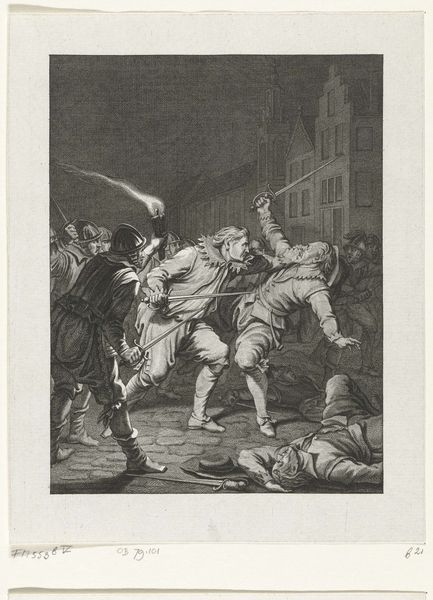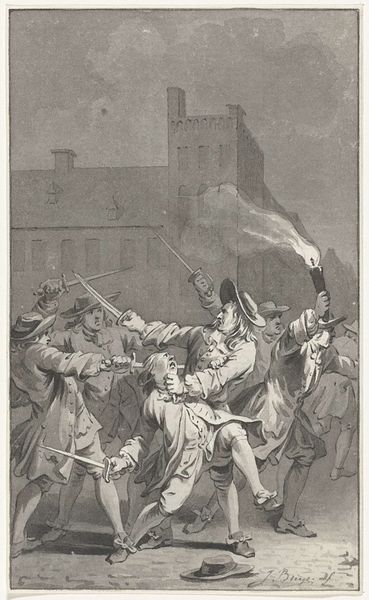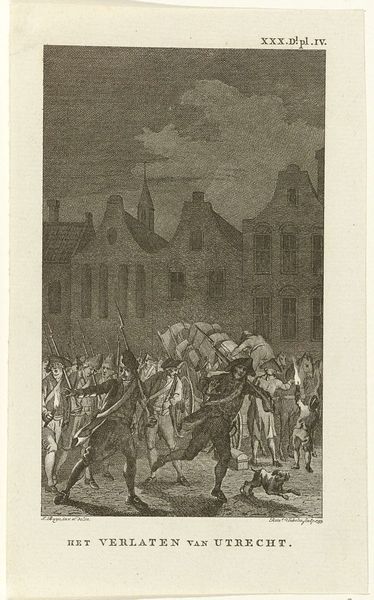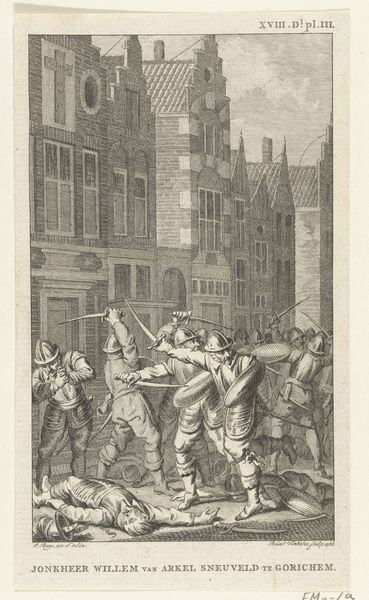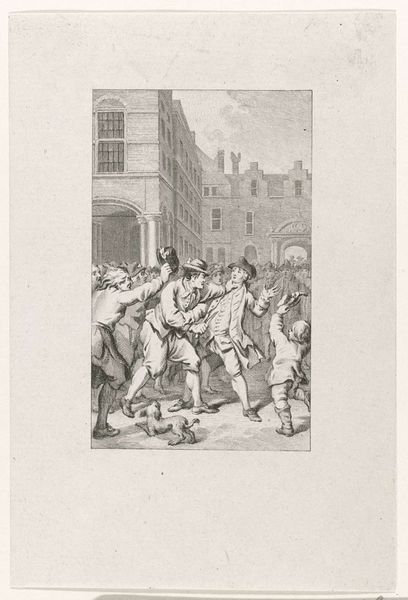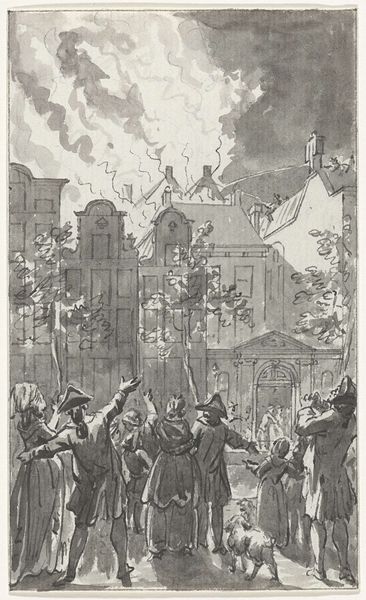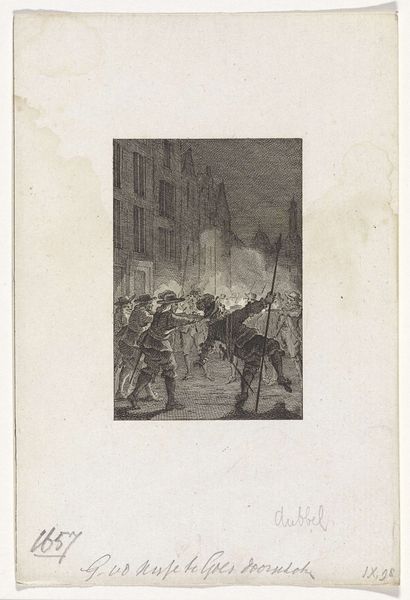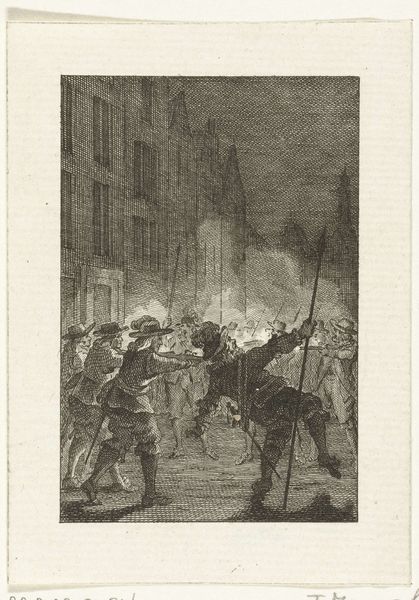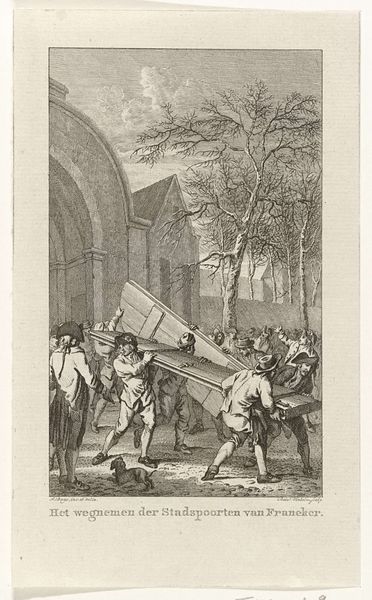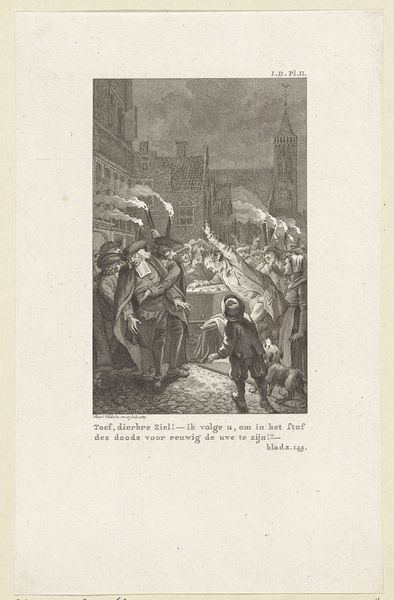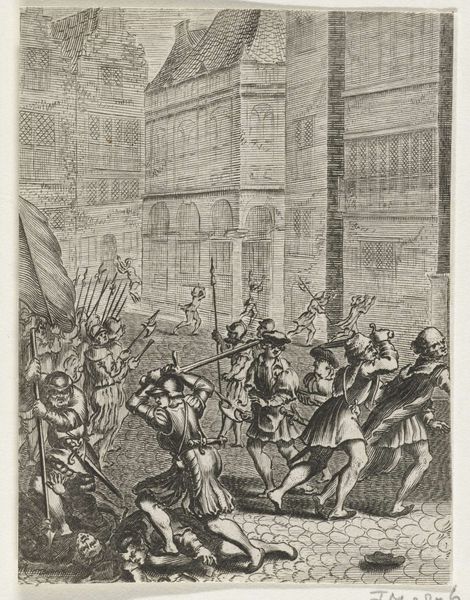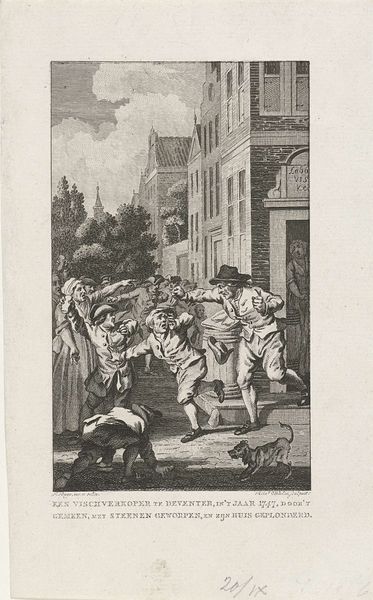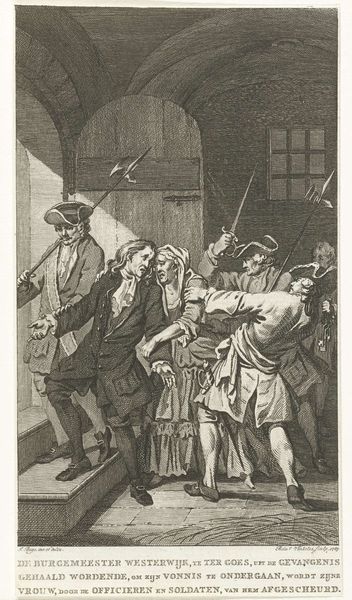
Dimensions: height 175 mm, width 110 mm
Copyright: Rijks Museum: Open Domain
Curator: This engraving by Reinier Vinkeles, made in 1788, depicts a gruesome historical moment: "Johan de Witt aangevallen en zwaar gewond, 1672," showing the assault and severe wounding of Johan de Witt. It's currently held in the Rijksmuseum collection. Editor: My immediate reaction is one of violent tension. The way the artist uses line work creates a sense of chaos. It makes the viewer acutely aware of the human cost inherent to violent events. Curator: Vinkeles created this print more than a century after the event. As a materialist, I am drawn to understanding the context of its making. Prints were widely disseminated, impacting public perception of history. What statements were printmakers making during the Enlightenment by visualizing historical violence? Who was this print being made for? Editor: Exactly! I would argue this engraving reinforces a particular narrative about power and vulnerability. Johan de Witt, a powerful political figure, is shown at the mercy of an angry mob. I wonder, what statements did images like these, intended for a broader audience, make about political power at the time? How do we interpret that dynamic of political power? What is it trying to tell us about mob mentality? Curator: Thinking about the physical object itself – the copperplate, the ink, the paper – it speaks to the growth of a printmaking industry. The skilled labor of artisans played a key role in shaping collective memory. Who were the workshops involved and what was the supply chain of distribution in 1788? Editor: Furthermore, how does the artist's decision to represent such graphic violence play into contemporary discussions surrounding national identity and trauma? It compels us to engage with difficult aspects of history and acknowledge marginalized narratives often excluded from mainstream accounts. Curator: Ultimately, this print isn't just an image; it's a commodity, a record of technological advancement, and a lens through which we can examine evolving social attitudes towards violence and the circulation of political imagery. Editor: Right. Analyzing it forces us to consider the intersectionality of social power, historical memory, and artistic representation, which remain powerfully relevant today. It's a powerful image that is both historically specific and timeless.
Comments
No comments
Be the first to comment and join the conversation on the ultimate creative platform.

